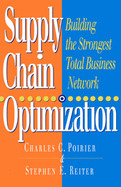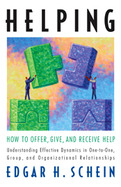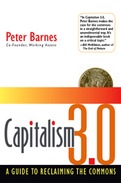Teaching That Changes Lives is a transformational and practical guide that will enable teachers to make an authentic difference with their students and avoid succumbing to the myriad pressures and challenges of their jobs.
Using the storytelling format that proved so successful in her previous book, Adams tells how Emma, a sixth-grade teacher on the verge of quitting her job, learns to cultivate what Adams calls the “Learner Mindset”— having the discipline, curiosity, and courage to consistently ask growth-oriented, open-minded questions of oneself and others—and to avoid the close-minded and critical “Judger Mindset.” Emma transforms her classroom, her relationships with her colleagues, and, most importantly, her students' eagerness for learning and achievement.
Teaching is more than imparting facts and skills—it's preparing students for the test of life. Featuring an innovative, easy-to-follow workbook and access to a Learner Mindset online mini-course, this inspiring book will ensure that teachers and students alike become creative, resilient problem solvers, bridge builders, and lifelong learners.
This visionary but practical handbook offers mission-driven business owners a roadmap for ensuring their company's lasting impact, building leadership internally, and fostering participatory management.
Through inspiring real-world stories of B-Corps, worker co-ops, ESOPs, and employee ownership trusts, this book demonstrates how to create resilient organizations that benefit workers and communities.
Drawing on his 50-year journey with South Mountain Company and extensive research, Abrams outlines five critical transitions for mission-driven businesses to become what he calls a CommonWealth company:
• From founder to next-generation leadership
• From sole ownership to widely shared
• From hierarchical control to democratic management
• From unprotected mission to preserved purpose
• From business-as-usual to B Corp force for good
From Founder to Future is an essential guide for mission-driven leaders seeking to reshape their businesses for inclusivity, longevity, and positive impact. Whether you're a retiring owner planning your exit, a young entrepreneur building for the future, or an employee working in a purpose-driven business, this book offers a blueprint for creating enduring, values-driven enterprises in the emerging regenerative economy.
As 3,000,000 U.S. small business founders over 55 prepare to retire, $10 trillion in assets will change hands over the next two decades. This timely guide shows how to preserve your company's mission and legacy while empowering the next generation.
Supply Chain Optimization illustrates how companies that create, distribute, and sell products or services can join forces to establish a supply network with an unbeatable competitive advantage. Poirier and Reiter explain how companies can successfully employ partnering, rather than working on improvements in isolation, to identify high opportunity initiatives across a total supply network. By applying key resources on focused opportunities and sharing the resulting savings, members of the network get larger results, faster, as well as funding for future efforts.
At the heart of Poirier's and Reiter's plan is a four-step model to mobilize joint effort and focus resources from suppliers, manufacturers, distributors, and retailers on initiatives that have a high pay-back potential. The authors have studied the successes of such influential retailers as Wal-Mart, K-Mart, Target, and Sears, all of which are laying the groundwork for how to use point-of-sale data to create quick-response alliances with selected suppliers who will take responsibility for replenishing stock to predetermined levels. Supply Chain Optimization explains how to develop such effective partnering techniques and demystifies the electronic data linkages that are necessary to make them work.
Supply Chain Optimization offers survival tools for companies of all sizes. The authors describe consortiums, or "share groups," of smaller companies that can compete with the volume leverage of large corporations, superstores, and warehouse stores. By analyzing their shared supply chain and pooling their available resources, these consortiums can find hidden savings to protect their profit margins and remain competitive in today's marketplace.
The book includes case studies that show what a wide range of companies are actually doing to achieve supply chain optimization. Companies profiled include: Financing Division of General Electric, Dial Corporation, Proctor & Gamble, Baxter Healthcare Corporation, Navistar/Goodyear, Packaging Corporation of America, Dominick's, Hart Mountain Corporation, and General Motors--Saturn.
Partnering requires more than technological expertise. Successful partnerships display high levels of cooperation expressed by the sharing of resources, time, energy, and the benefits achieved. Poirier and Reiter describe the many pitfalls that must be avoided, and create a vision of how firms can build on their existing supply initiatives to gain a greater competitive advantage in today's business world.
- Helps manufacturers, service companies, suppliers, distributors, and retailers find the hidden partnership opportunities in the business relationships they already have
- Explains how true partnering techniques can generate enhancements across a total supply network resulting in savings for all members of the network, as well as funding for future improvements
- Includes action studies to show how the concepts have been implemented
2009
By the bestselling author of Career Anchors (over 431,000 copies sold) and Organizational Culture and Leadership (over 153,000 sold)
A penetrating analysis of the psychological and social dynamics of helping relationships
Named one of the best leadership books of 2009 by strategy+business magazine
Helping is a fundamental human activity, but it can also be a frustrating one. All too often, to our bewilderment, our sincere offers of help are resented, resisted, or refusedand we often react the same way when people try to help us. Why is it so difficult to provide or accept help? How can we make the whole process easier?
Many different words are used for helping: assisting, aiding, advising, caregiving, coaching, consulting, counseling, guiding, mentoring, supporting, teaching, and many more. In this seminal book on the topic, corporate culture and organizational development guru Ed Schein analyzes the social and psychological dynamics common to all types of helping relationships, explains why help is often not helpful, and shows what any would-be helpers must do to ensure that their assistance is both welcomed and genuinely useful.
The moment of asking for and offering help is a delicate and complex one, fraught with inequities and ambiguities. Schein helps us navigate that moment so we avoid potential pitfalls, mitigate power imbalances, and establish a solid foundation of trust. He identifies three roles a helper can play, explaining which one is nearly always the best starting point if we are to provide truly effective help. So that readers can determine exactly what kind of help is needed, he describes an inquiry process that puts the helper and the client on an equal footing, encouraging the client to open up and engage and giving the helper much better information to work with. And he shows how these techniques can be applied to teamwork and to organizational leadership.
Illustrated with examples from many types of relationshipshusbands and wives, doctors and patients, consultants and clientsHelping is a concise, definitive analysis of what it takes to establish successful, mutually satisfying helping relationships.
2008
2006
Barnes shows how capitalism — like a computer — is run by an operating system. Our current operating system gives too much power to profit-maximizing corporations that devour the commons and distribute most of their profits to a sliver of the population. And government — which in theory should defend the commons — is all too often a tool of those very corporations.
Barnes proposes a revised operating system — Capitalism 3.0 — that protects the commons while preserving the many strengths of capitalism as we know it. His major innovation is the commons trust, a market based legal entity with the power to limit the use of scare commons, charge rent, and pay dividends — in both cash and services — to everyone.
In Barnes' vision, an array of commons trusts would institutionalize our obligations to future generations, fellow citizens, and nature. Once established, they'd use markets and property rights to create a better world for us all.
Capitalism 3.0 offers a practical alternative to our current flawed economic system. It points the way to a future in which we can retain capitalism's virtues while mitigating its vices.
- Watch a video of Peter Barnes on ForaTV
- By a cofounder and former president of Working Assets
- Offers a startlingly original way to adapt capitalism to the 21st century
- Shows that protecting "the commons"--humanity's shared natural and cultural heritage--is the key to revitalizing capitalism and safeguarding the planet





















